We spent one night in Sivas and had half a day sightseeing. Sivas has been an important city since Roman times, so its historical buildings are a highlight.
The sights are concentrated in the city centre and can be seen in a few hours’ walk. Here are some of the sights and attractions we visited during our city walk in Sivas.
- About Sivas
- Çifte Minareli Medrese
- Sifaiye Madrasah
- Tomb of İzzettin Keykavus
- Buruciye Madrasah
- Kale Mosque
- Kale Public Baths (Kale Hamamı)
- Gök Madrasa
- Sivas Great Mosque (Ulu Mosque)
- Sivas Taşhan
- Meydan Mosque
- Sivas tarihi Jandarma binası
- Sivas Congress Museum (Sivas Etnografya Müzesi)
- Terzioğlu Mansion (Terzioğlu Konağı)
- Hoca Hüssam Mosque
- Tarhana Ganem Mosque (Tarhana Ganem Cami)
- Serçeli Mosque (Serçeli Cami)
- Accommodation in Sivas
- Dining in Sivas
About Sivas
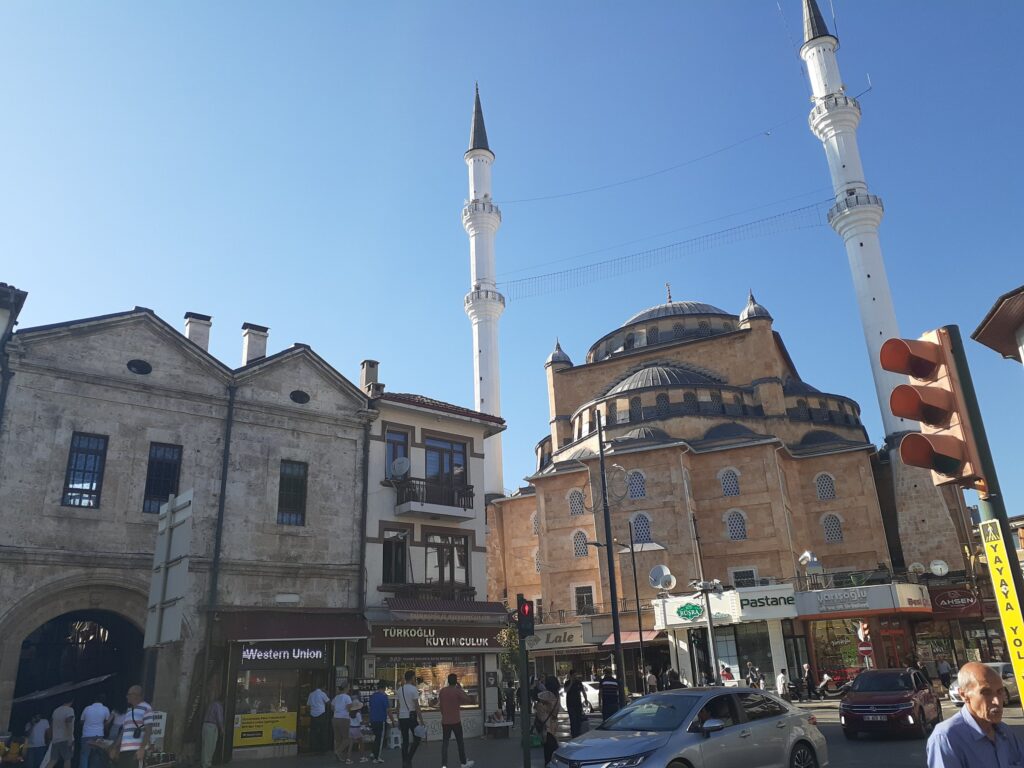
Sivas is a city in central Turkey and the capital of Sivas Province. It has a population of approximately 365,000 (2022). At an altitude of 1,278 metres, it is the highest town in Central Anatolia.
Since Roman times, the city has been an important transit point on the north-south to Iraq and Iran and east-west trade routes. The ancient name Sebasteia has the same etymology as the European masculine name ‘Sebastian’.
As a cultural centre, Sivas preserves many 12th- and 13th-century Seljuk buildings and architectural styles from the Ottoman Empire.
Çifte Minareli Medrese
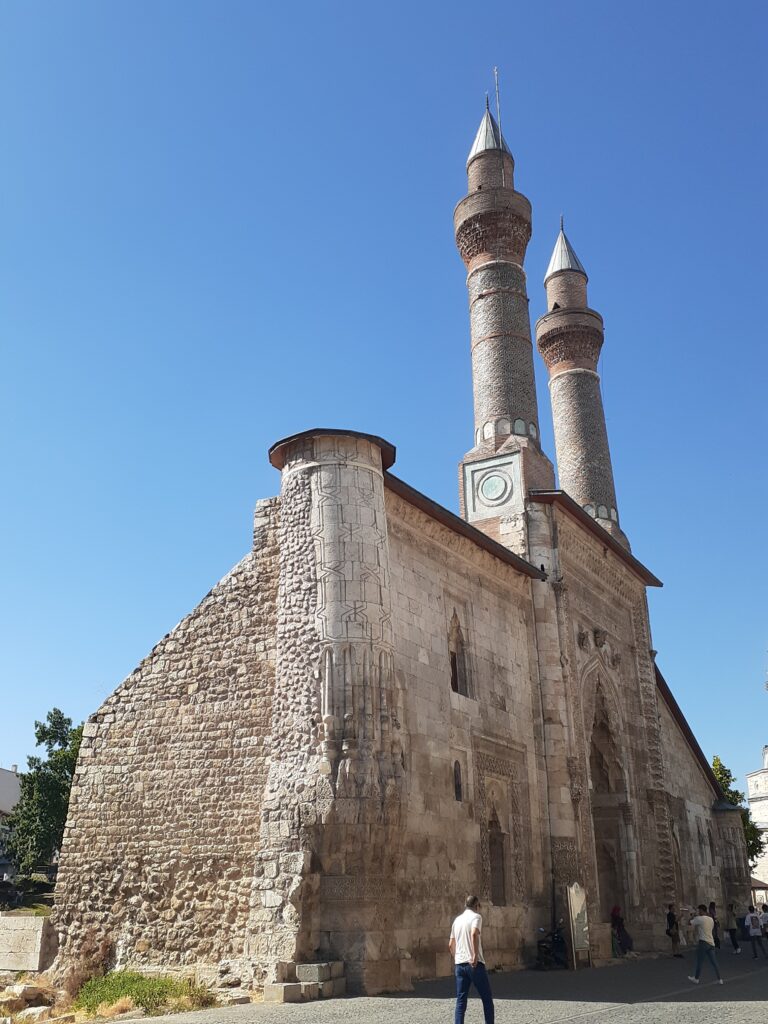
This is a madrasa with two minarets, built in 1271. It is located opposite the Sifaiye Madrasa, but apart from the elaborately decorated façade and the brick and tile minarets, no other parts remain. From the foundations and other parts of the building that can be seen today, it is known that it was a two-storey building and that there was a bathhouse in the north-east corner.
Sifaiye Madrasah

This madrasah was built in 1217. It has typical Seljuk architectural features and was a medical centre where medicine was also taught. The tomb of its founder, İzzettin Kaykavus I, is located on the premises.
Tomb of İzzettin Keykavus
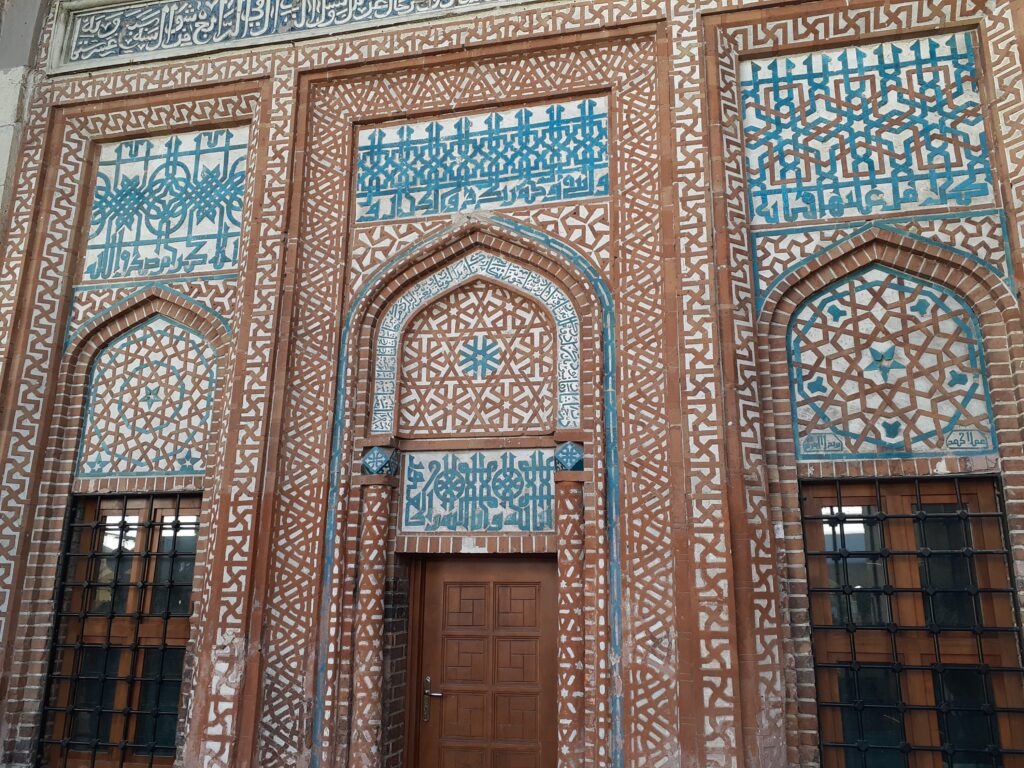
This is the tomb of ruler-governor İzzettin Keykavus, located in the Sifaiye Madrasa, who died of tuberculosis in 1220 and was buried according to his will in the Sivas Medical Centre, which he loved.
It is located beside a café that attracts a large crowd of customers and has a beautiful section with chic geometric decorations.
Buruciye Madrasah
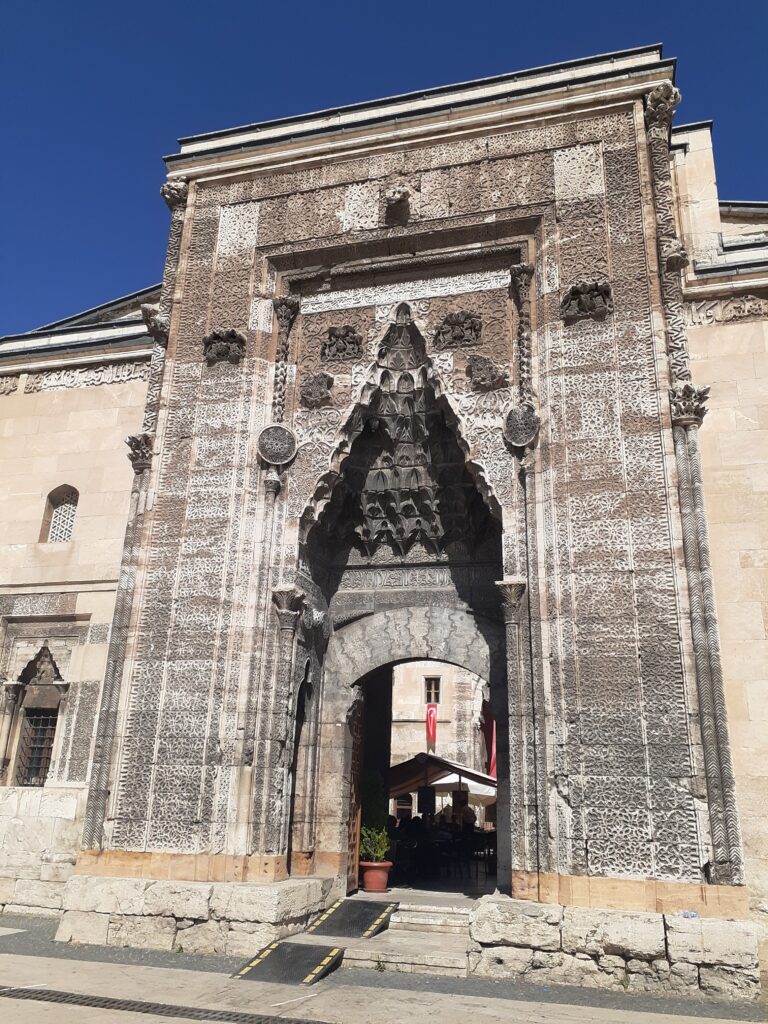
Built in 1217, this building was used for many years to teach empirical sciences such as physics, chemistry and astronomy.
The cream-coloured stone façade with beautiful stone carvings makes this madrasah impressive.
Today, a café has been set up in the courtyard and was crowded with people during the weekend. Photography of the structures may be better in the early morning.
Kale Mosque
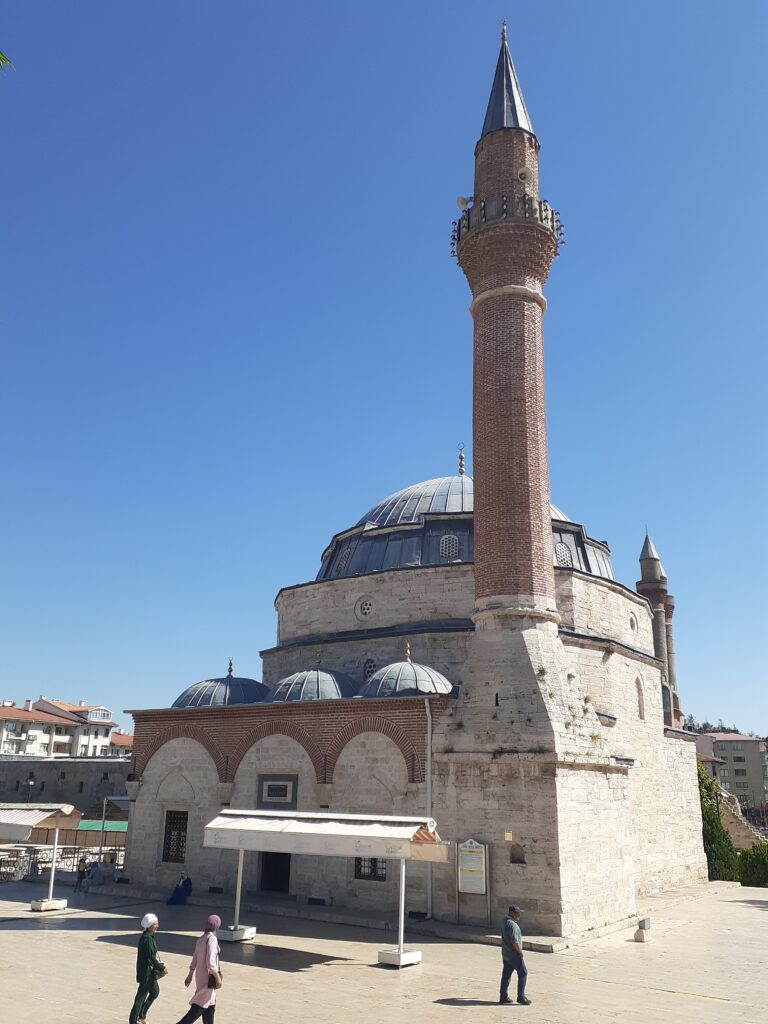
Built by Mahmut Pasha in 1580. ‘Kale’ means ‘fortress’, but the name ‘Kale Mosque’ derives from the fact that it was surrounded by the city’s lower fortifications, along with two madrasas and other government buildings.
Kale Public Baths (Kale Hamamı)

The remains of a public baths between the Kale Mosque and the Buruciye Madrasa, discovered during excavations carried out between 1961 and 1963. It is rectangular in plan, lying in an east-west direction, but only the remains of the walls are extant today.
It has a twin bath with separate sections for women and men, although the date of destruction of the bathhouse is unknown.
Gök Madrasa
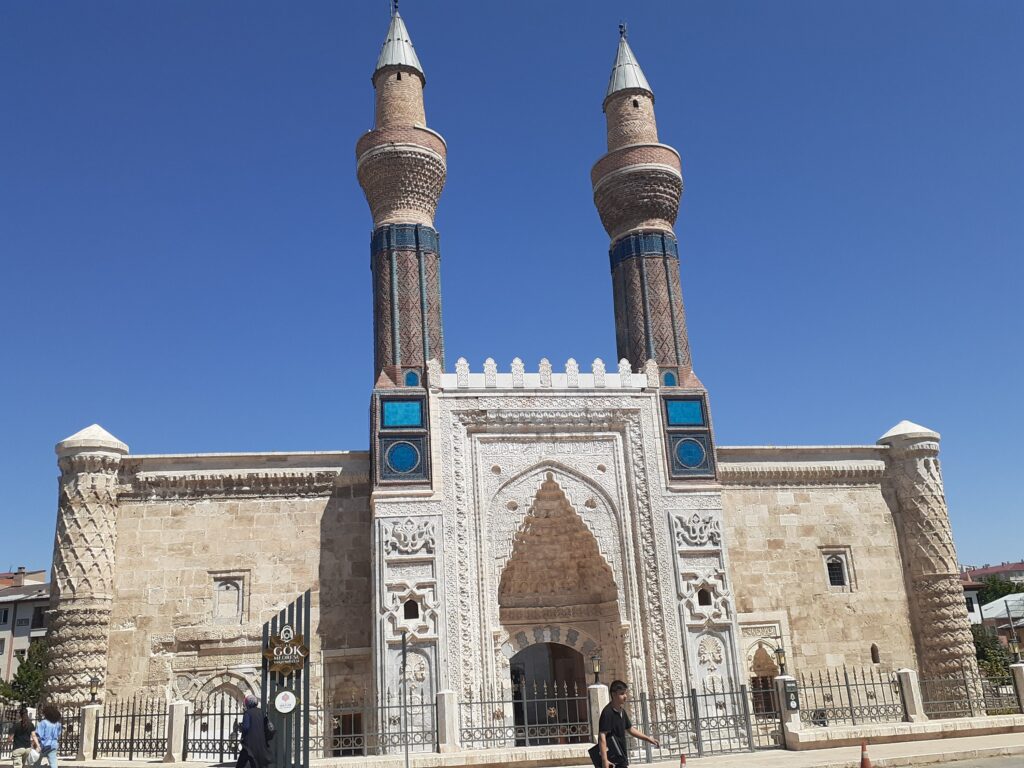
Known as the ‘Blue Madrasa’, Gök Madrasa was built in 1271 during the Seljuk period in Anatolia. It has an impressive, beautifully decorated façade with two 25 m high minarets. The white-walled rooms serve as a museum displaying various documents.
A stylish café-restaurant is housed in the courtyard.
Sivas Great Mosque (Ulu Mosque)

Built between 1196-1197 and restored in 1212. It is one of the oldest mosques in Anatolia. The minaret is known to have been built in 1213.
There are several gates and a staircase leads down to the courtyard. The prayer area was large and solemn. The minaret is slightly tilted with bricks partially missing and, depending on the angle of view, it appears to be bent.
Sivas Taşhan
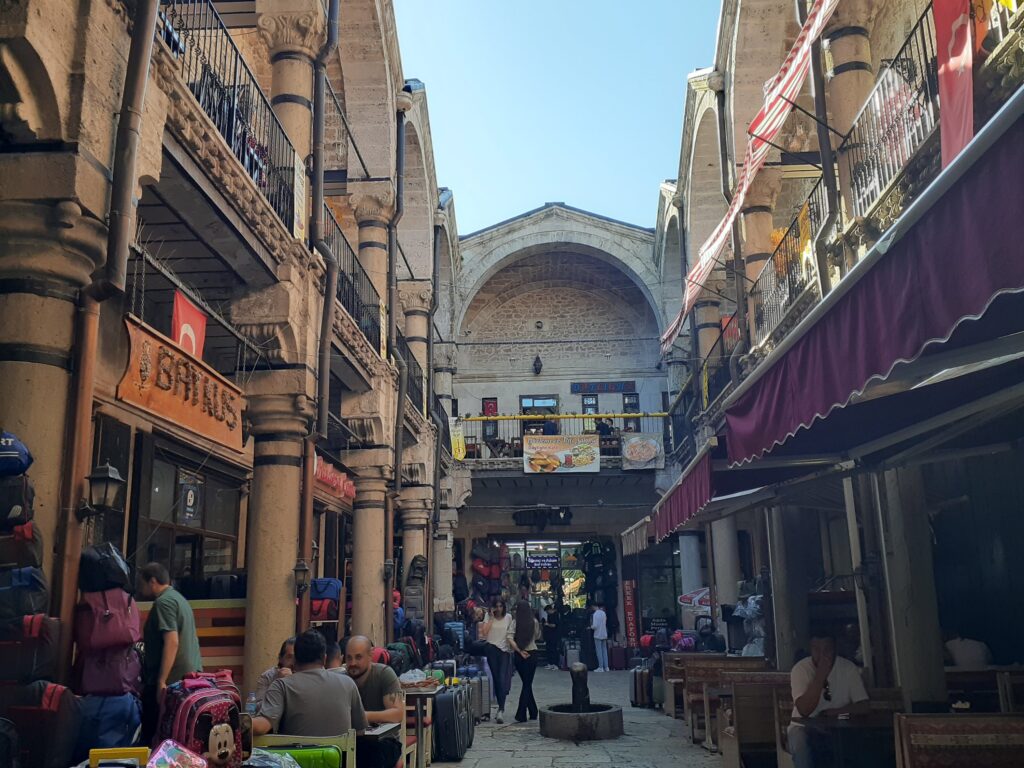
It is said to have been built by Halil Rufat Paşa, who was governor of Sivas from 1882 to 1885. The two-storey taşhan is located in the centre of Sivas town and is now crowded with cafés and shops.
Meydan Mosque
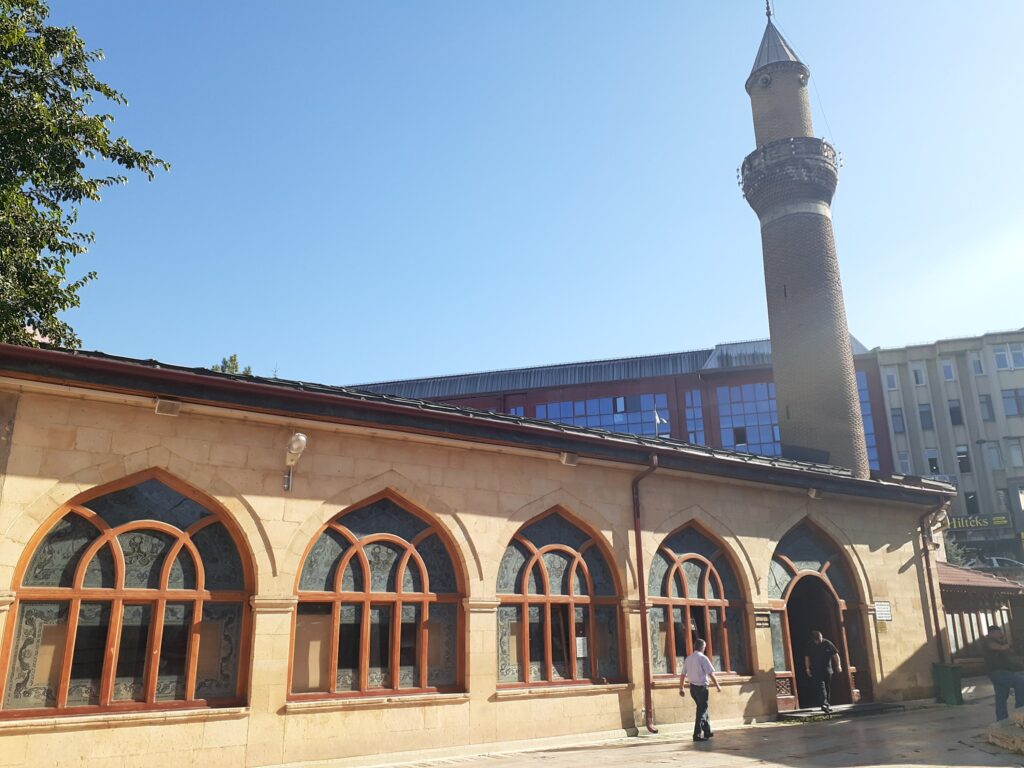
This mosque was built in 1564. The site has a peaceful atmosphere in the downtown area of Sivas. The window design is beautiful, with curved curved wooden frames embedded in the repeated arches.
Sivas tarihi Jandarma binası
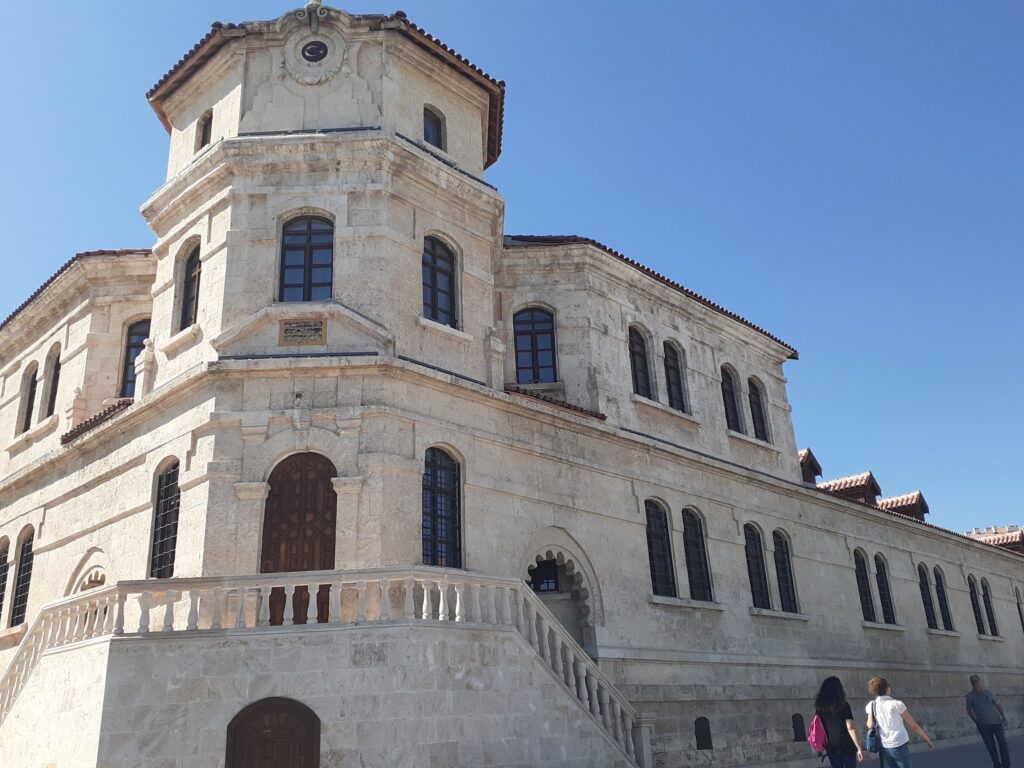
This building was built in 1908 as a military police station during the reign of Governor Resit Akif Paşa. It is conspicuous because it stands facing Sivas Cumhuriyet Square (Sivas Republic Square).
Sivas Congress Museum (Sivas Etnografya Müzesi)
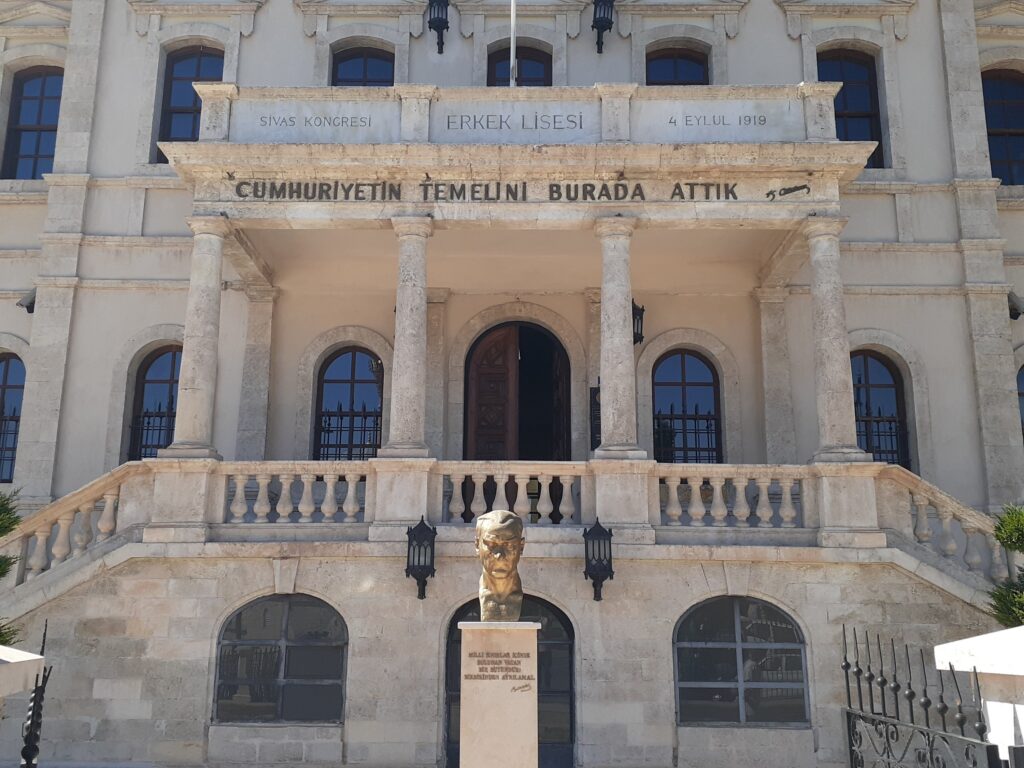
This three-storey building is a beautiful example of late 19th-century Ottoman civilian architecture, originally built in 1892 as a civilian high school, it was used by Mustafa Kemal Atatürk and his Representative Committee as the ‘National Struggle Headquarters’ from 2 September to 18 December 1919. It was opened to the public as a museum in 1990, and the historical conference hall and the study and common room have been preserved as they were at the time of the conference.
Terzioğlu Mansion (Terzioğlu Konağı)

This is one of the 29 registered historical residences in Sivas city centre. It is characterised by its wooden frame, white walls and overhanging second floor.
Hoca Hüssam Mosque
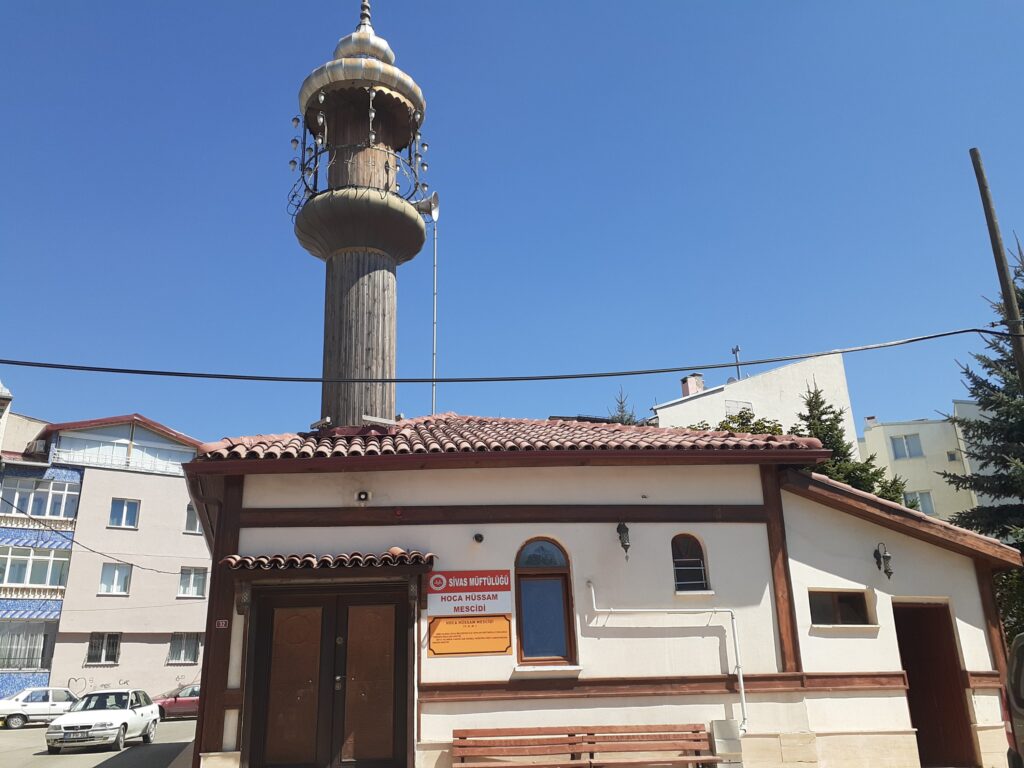
The date of construction is uncertain, but the building was once destroyed and restored in 2000. It is characterised by its softly curved roof minaret.
Tarhana Ganem Mosque (Tarhana Ganem Cami)

Not much information about this mosque is found, but the minaret with green tiles embedded in a spiral pattern is impressive and caught our attention.
Serçeli Mosque (Serçeli Cami)
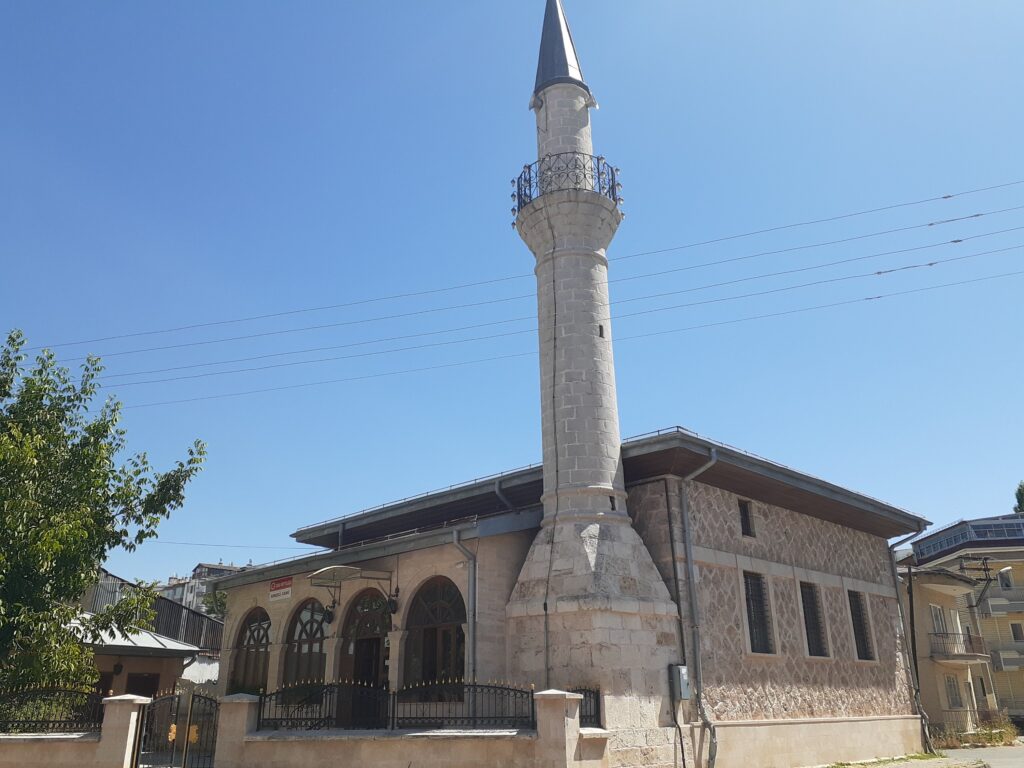
This mosque is characterised by its simple whitish stonework and its narrow minaret like a skinny rocket. It is a one-storey building with beautiful window arches.
Accommodation in Sivas
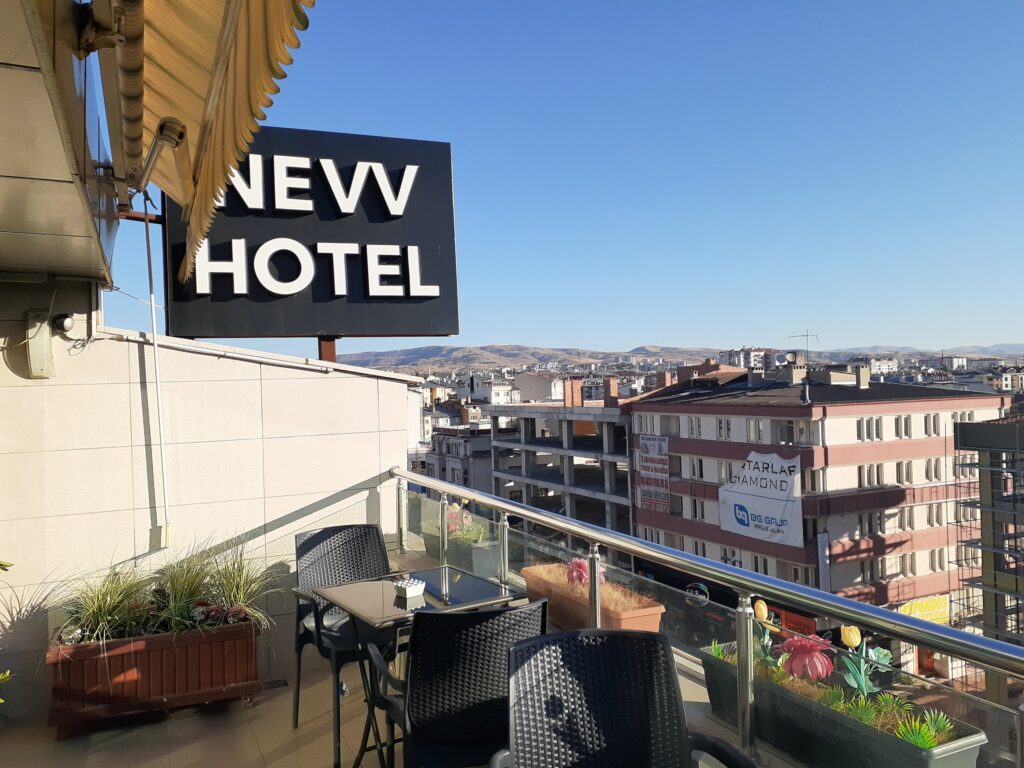
In Sivas we stayed at the Sivas Nevv Hotel. The asking price for a double room was 1,000 TL, but we negotiated and got a discount to 900 TL. For a more detailed review, see Google Maps.
Dining in Sivas
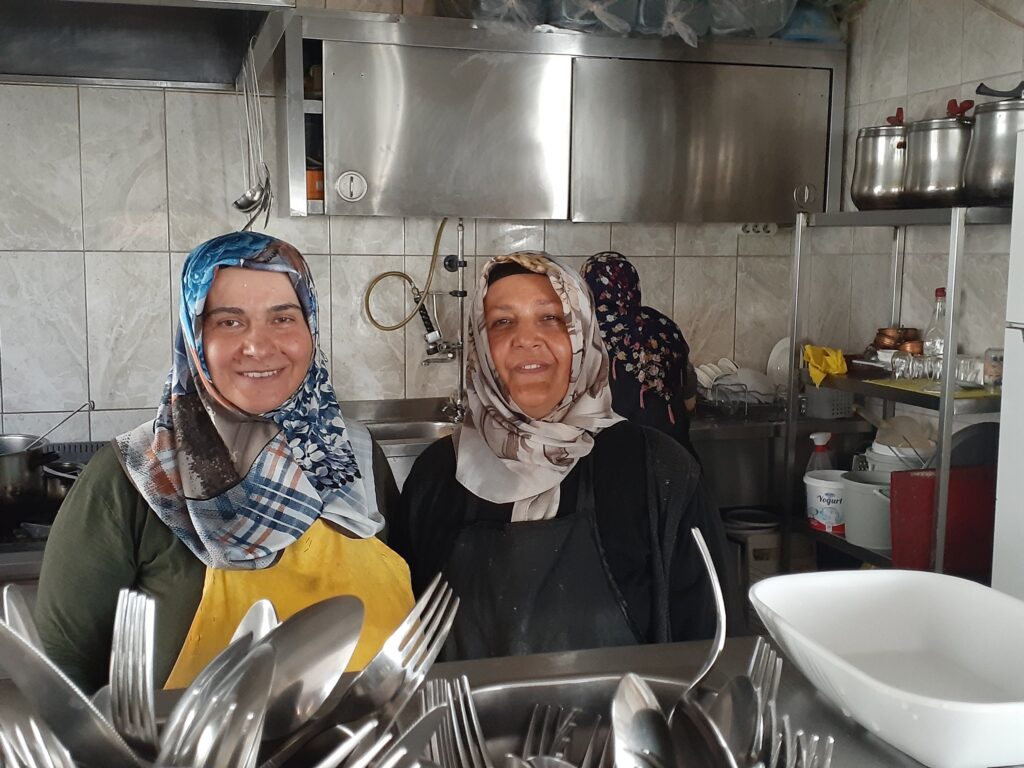
Meals in Sivas were served at Sema Hanımın Yeri Ev Yemeklei. The chicken vegetable roll set, with rice, soup salad and bread, plus a homemade ayran (salty yoghurt drink), excellent value at 190 lira for two people. A detailed review can be found on Google Maps.
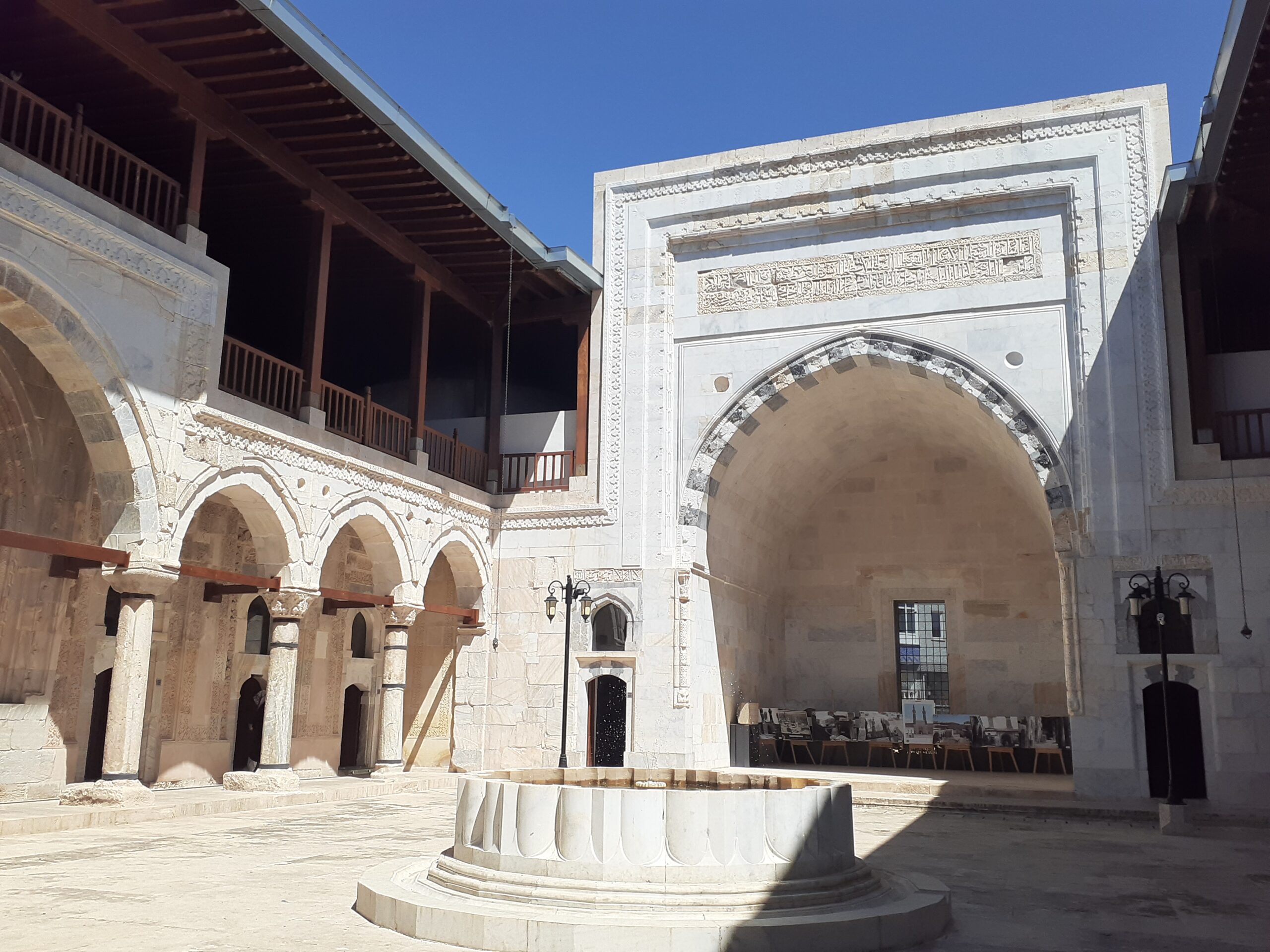


Comment